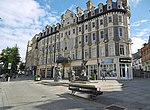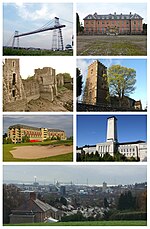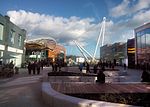Newport Cathedral
11th-century church buildings in WalesAnglican cathedrals in WalesCulture in Newport, WalesDeans of MonmouthGrade I listed cathedrals in Wales ... and 5 more
Grade I listed churches in Newport, WalesHistory of Newport, WalesLandmarks in Newport, WalesTourist attractions in Newport, WalesUse British English from August 2013

Newport Cathedral (Welsh: Eglwys Gaderiol Casnewydd), also known as St Gwynllyw's or St Woolos' Cathedral, is the cathedral of the Diocese of Monmouth within the Church in Wales, and the seat of the Bishop of Monmouth. Its official title is Newport Cathedral of St Woolos, King and Confessor. The name of the saint, Woolos, is an anglicisation of the Welsh name Gwynllyw.: 280 It became a cathedral in 1949 and while it is the size of a large parish church rather than a typical cathedral, its history and development from the sixth to the twentieth century make it arguably one of the most interesting religious buildings in Wales.: 159
Excerpt from the Wikipedia article Newport Cathedral (License: CC BY-SA 3.0, Authors, Images).Newport Cathedral
Stow Hill, Newport St. Woolos
Geographical coordinates (GPS) Address Phone number Website External links Nearby Places Show on map
Geographical coordinates (GPS)
| Latitude | Longitude |
|---|---|
| N 51.583055555556 ° | E -2.9986111111111 ° |
Address
Newport Cathedral (St Woolos Cathedral)
Stow Hill 105
NP20 4ED Newport, St. Woolos
Wales, United Kingdom
Open on Google Maps









